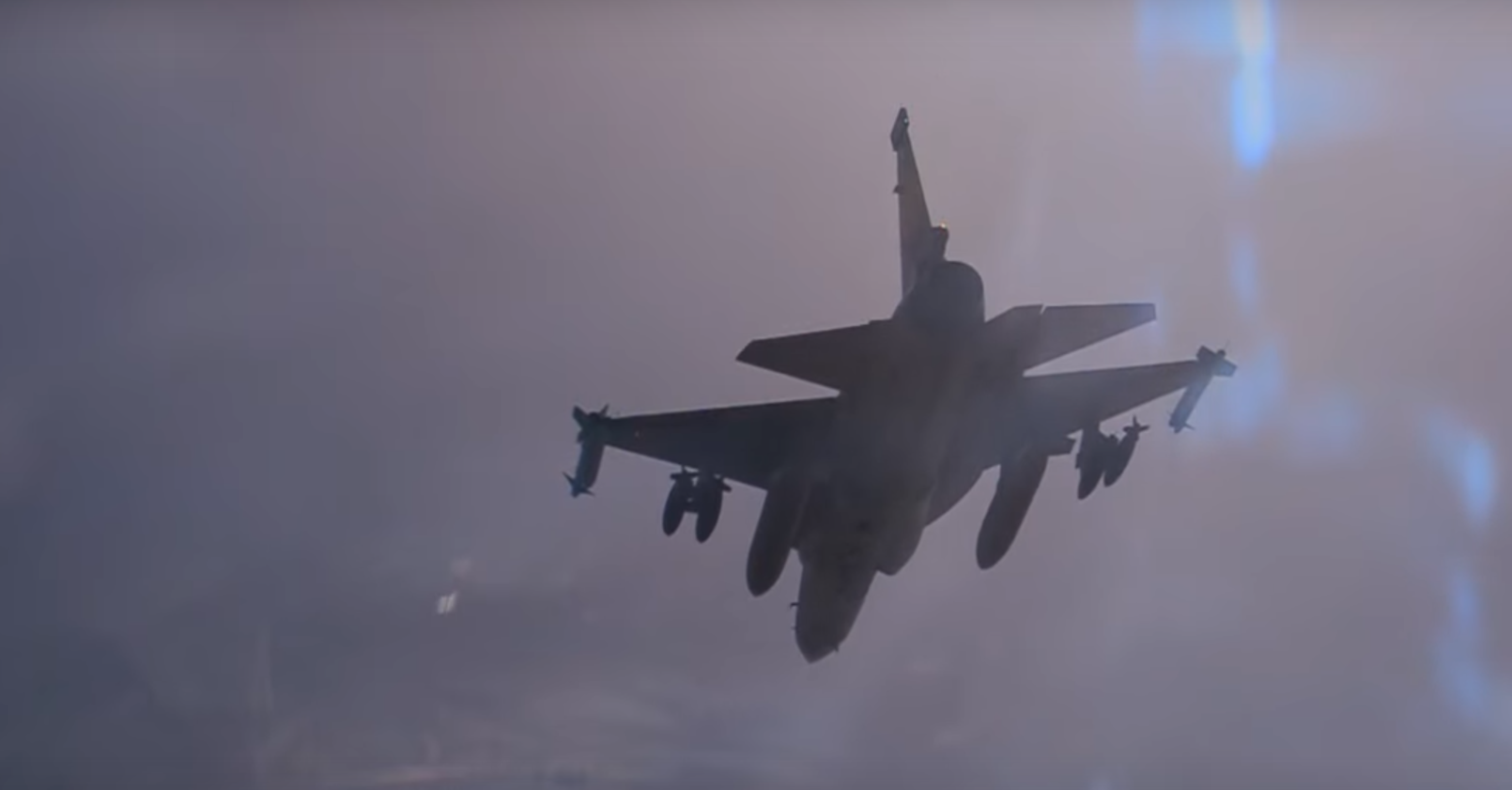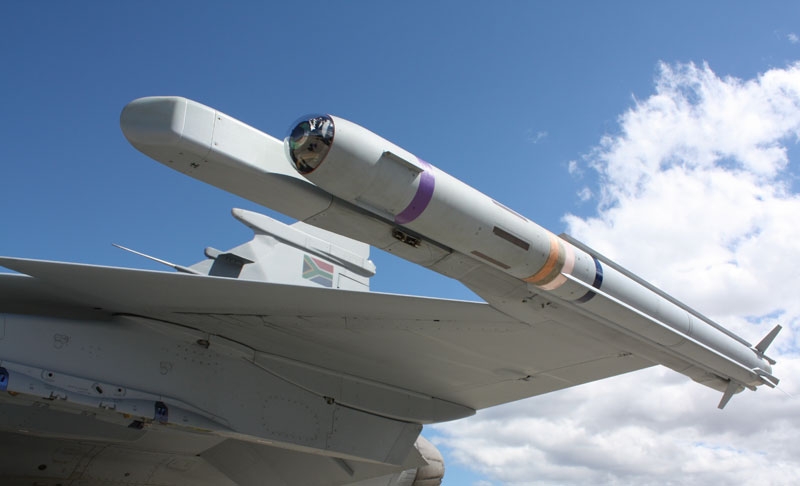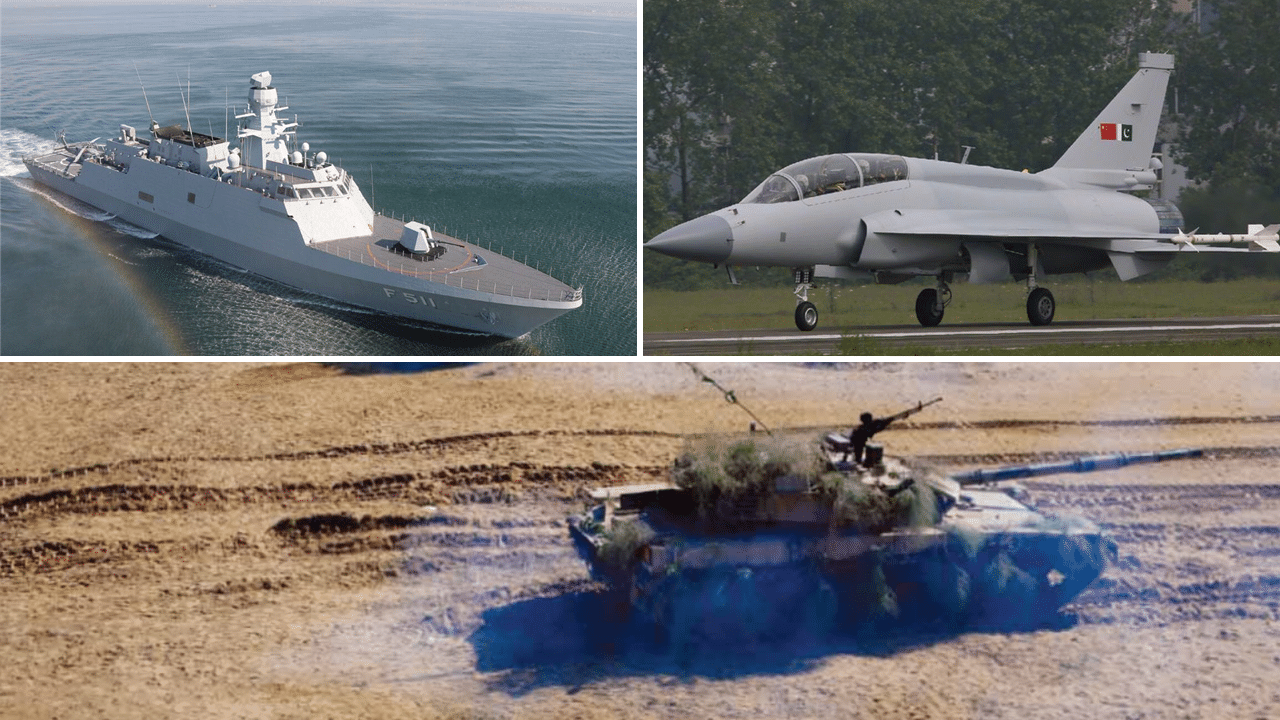2467Views 22Comments

Could Aselsan provide EW/ECM gear for the JF-17?
The Pakistan Air Force (PAF) has not been coy about keeping the JF-17 Thunder’s electronic warfare (EW) and electronic countermeasures (ECM) options open, especially from the perspective of building out the JF-17’s exportability. A few years ago, Pakistan Aeronautical Complex (PAC) tested an EW suite controller acquired from the Spanish firm Indra, and some believe that the JF-17 Block-II uses an Indra ECM suite.
The freedom to integrate its choice of weapons and subsystems onto the platform confers the PAF with advantages that are not available with the F-16. These advantages include quicker iterative upgrades, an assured modernization roadmap, and the ability to explore and exercise the full gamut of possible options.
One such option could be Aselsan, Turkey’s leading producer of military-grade electronics equipment. Through a combination of local licensed manufacturing and original research and development (R&D), Aselsan became leading electronics vendor for the Turkish military, especially over the past 10 years. In fact, the next several years will likely be a “break-out” period of sorts for Aselsan as it begins to channel the results of its own R&D efforts into marketable high-quality solutions.
Aselsan has no shortage of programs, but the focus of this article will be on the company’s EW and ECM technology. While the company’s efforts originally centered on producing the BAE Systems’ AN/ALQ-178 SPEWS (short for Self Protection Electronic Warfare System) for the Turkish Air Force’s F-16s, the company succeeded in developing its own complete EW and ECM solutions. For example, Aselsan produces its own radar warning receiver (RWR), missile warning system (MWS), laser warning system (LWS), chaff and flare management and dispensing system, and digital radio frequency memory (DRFM)-based jamming system.
For those of you not familiar with EW/ECM. The systems noted above basically enable fighter aircraft (and other aircraft types) to protect themselves against airborne threats, such as enemy radar detection and air-to-air (as well as surface-to-air) missiles. RWRs alert fighters to possible enemy radar activity, chaff and flare systems can be used to thwart infrared and radar-guided missiles, and DRFM-jamming can be used to reduce enemy radar effectiveness (and potentially even thwart radar-guided missiles). For higher output jamming, dedicated EW pods are also available.
Aselsan is marketing its subsystems as an integrated ECM solution – the ‘Helicopter Electronic Warfare System’ (HEWS). The specific reference to helicopters notwithstanding, Aselsan is actually pushing the HEWS as an ECM suite for fixed-wing aircraft as well. Given that Aselsan is also developing an active electronically-scanned array (AESA) radar and dedicated EW pod for the Turkish Air Force’s F-16s, it is likely that the HEWS will serve as the foundation for a new ECM kit as well (destined for Turkey’s F-16s).
Looking at Aselsan’s messaging, it is evident that a very high level of competency was invested into developing the HEWS’ subsystems. For example, Aselsan claims that the HEWS’ DRFM-based jammer uses “transmitters with active electronically-scanned phased array antenna (AESA) architecture.” This enables the system to provide “RF spectrum coverage with the most advanced countermeasure techniques.”
The Aselsan HEWS or a variation of it could be a viable ECM suite for use on the JF-17. Granted, the PAF’s fiscal constraints may limited the extent to which it could draw upon Aselsan’s expertise, but then again, the situation may not be as dire if fighter funding were fully concentrated behind the JF-17. With the Aselsan HEWS, the JF-17 could potentially have a self-protection suite comparable to the AN/ALQ-211(v9) used on the PAF’s F-16A/B Mid-Life Update (MLU), for example.
If the PAF is already using a comparable suite provided by Indra (e.g. ALQ-500) on the JF-17 Block-II, then it is unlikely it would need the Aselsan HEWS for itself. However, if Indra is not a factor, then the HEWS could be a viable option for the PAF. The PAF will have to be careful with its limited funds, there is nothing wrong with staging a significant ECM upgrade with the Block-III.
In any case, imagine the idea of having 50 (or potentially 100-150) JF-17s equipped to this level – i.e. a large number of comparatively low-cost aircraft equipped with the same radar, EW/ECM, and weapon-systems technology found on much more expensive alternatives. Sure, a single JF-17 equipped to these specifications is not going to be superior to an individual Rafale or Su-35, but a large number of them (each with an AESA radar and DRFM-based EW/ECM suite) data-linked to one another and an airborne early warning and control (AEW&C) aircraft will offer a credible defensive deterrent.
In terms of export, the HEWS could be a way to enhance the exportability of the JF-17 before the introduction of the JF-17 Block-III. Subsystems such as helmet-mounted display and sight (HMD/S) and high off-boresight (HOBS) air-to-air missiles (AAM) are already available on the market. PAC could get these systems integrated onto the JF-17 Block-II, and in turn, offer it as a solution to prospective buyers, especially buyers that are likely keen on achieving strong qualitative enhancements with their big-ticket acquisitions, such as Morocco. It is not uncommon to see an export variant of a fighter be superior to the variant used domestically, it is after all much easier to iterate upon a prototype than it is with a fully operational (and busy) fleet. Just take the United Arab Emirates and the F-16E/F Block-60 as an example.
In the end, it is worth remembering that Aselsan is just an option, and there are other options; but this is the beauty of the JF-17, we can discuss options. There was news a while back of the PAF expressing its interest in the Thales Damocles targeting pod, and given the headway India is apparently making in terms of buying Rafales from Dassault, that pod is probably not going to be a reality for the PAF. But who cares? The PAF can keep exploring its options, such as the Aselsan ASELPOD, or a new Chinese targeting pod, and so on. At least the PAF does not have to sit idle and wait for the U.S. to release or approve a national need.



22 Comments
by Abdullah Arslan
Can we use old planes or soon to be retired F7 just for EW system?
what if F7, with others plane formation, loaded with all jamming and detecting suite and its sole job should be just deviating incoming hostile missiles? is it possible?
by Karly Johnston
Sure but it isn’t worth it.
by srmklive
It could be done on the Mirages, but i highly doubt it. The most possible combination would be JF-17 Block II with EW systems with JF-17 Block III as the attack aircrafts.
by srmklive
A really intriguing article Bilal. Again i would say the possible blockage of F-16 not being delivered is a blessing in disguise. This enables the PAF to really do its research on inclusion of possible new EW, IRST & AESA systems inclusion on JF-17 Block III or more. I believe that Block-III would have a totally different structure & design and i really hope that PAF puts its know how of F-16 to use in this regard as well.
What are your thoughts in this regard?
by jigsaww
They won’t change the design too much on block 3. Many of the systems can be integrated with few modifications. It won’t be a new design for now.
Block 4 could see design changes beyond 2025.
by srmklive
@jigsaww:disqus Suppose if they go with changing the whole design structure for Block-III. Could it also mean installation of new avionics due to new structure and new munitions systems etc. What would that scenario be?
by Abdul Rashid
There has been talk on this very site of a possible “nose job” to house new AESA radar and also hope expressed for a retractable IFR probe. These are perhaps the only two significant visible design changes. But time will tell. Pakistan and Chinese really do like to play their cards close to the chest.
by MT
Aselsan primarily license produce french,American Electronic so lots depend on their license to export MTCR compliance weapons
by jigsaww
Not entirely new avionics suite but changes here and there. Mainly overcoming integration issues.
by jigsaww
IFR is on block 2 already. Will be extended on block 1 soon.
Avionics and software package on block 1 will be upgraded to block 2 and so will be integration of new weapons.
AESA requires nose job.
For block 3, Strong possibility of composites, full FBW, eventually a new engine at some point (provided deal is secured), increase in hardpoints, weight capacity, new weapons for true multirole capability, EW upgrades, better aerodynamic performance, IRST, HMD and such goodies. 4++ standard basically.
by Abdul Rashid
I was referring to the possibility of a ‘retractable’ IFR. But yes, certainly a lot of mouth watering goodies. Don’t know about you, but going mad with impatience here. I hope expectations are met. If not I will be asking you and Bilal to, “please explain” (having no personal links within Pakistan’s defence esstablishment). If you think this is tough, it’s nothing compared to the 50 page sermon MT will prepare, “I tell Paks all along if II have 4++ gen like tejas have to have domestic d@R like hal and also 3 decades patience b4 product delivdered mountet on imported truck (not having knowhow to self build) I hope nest time pAk II heed my free techical input”.
by MT
What a proud achievement for pakistani to see their god china building the fighter in china while u guys do nothing more than requirements setting & evaluation.
In true terms,pak is customer of cheeni aircraft
But same is nt true for Hal which is involved as lead r&d developer for newly built system for pre production evaluation & later they manufacture/outsource the system to pvt companies for final productization
india don’t have to import trucks unlike pak which lacks a basic local automobile industry.
All of your TEL,launchers,trucks r imported
Don’t be shocked if u see 3rd block without an aesa.
sometimes I laugh at ur people for overestimating your junk
Block2 was barely little different from block1. so how do u expect aesa,irst,full digital avionics,composite in 24months as we see that block3 still in design phase
by jigsaww
Sorry i missed that part “retractable”. I think i read your comment in hurry. And in that case sorry, I have no information on whether block 3 will see retractable probe or not. May be we’ll just that to wait out to see.
I think requirements for block 3 are set. It will be a substantial upgrade from block 2.
Hindustanis will be hindustanis. There’s too much hatred to see beyond it.
by Zill e Hussnain
it is such a pity to see how the failed project by Indian defense industry needs trolls to protect their credibility and integrity, once again u are trying to down grade the JF17 Thunder by calling it Chinese, even though it only adds more agony to the tejas project, the air craft which is still required to get the final operational licence to be called fully operational let alone to be deployed and battle ready but thanks to the wikipedia and Indian trolls, they can change all the information online and make tejas operational even with the squadron of 2 air crafts which are being used for mainly the testing, well u will be fixing the design issues in tejas and JF17 Thunder will have its Block III ready and many of the Block I air crafts will be upgraded to the Block II and again u will be trolling about it being a Chines and bashing about tejas for being failed but Indian
by Mustafa O
Get ur psychiatric test b4 praising HAL and uncle tejas on this forum
by Sami Shahid
If it is a deal between Turkey and Pakistan than I’m sure and I hope JF-17 will get EW/ECM gear….
by Abdul Rashid
Time will tell how Blk 3 will look and then we can discuss it.
by Ben Solo
Did you read the article?
”the company succeeded in developing its own complete EW and ECM solutions. For example, Aselsan produces its own radar warning receiver (RWR), missile warning system (MWS), laser warning system (LWS), chaff and flare management and dispensing system, and digital radio frequency memory (DRFM)-based jamming system.”
by MT
turks haven’t made any aesa radar for awacs, fire control radar, long range radar.
Expecting them to develop an aesa radar for fighter jet knowing that any decent 1000 T/R module miniaturised aesa radar in aircraft require decade effort.
Turks EW are purely licensed tech from Bae system usa with some local parts.
by MT
turks haven’t made any aesa radar for awacs, fire control radar, long range radar.
Expecting them to develop an aesa radar for fighter jet knowing that any decent 1000 T/R module miniaturised aesa radar in aircraft require decade effort.
Turks EW are purely licensed tech from Bae system usa with some local parts.
Turk stands as novice in indigenous technology.
All of these Aselsan electronics published on their site is licensed manufacturing of western equipment under shadow of MTCR and Nato.
Turks won’t survive a month if they are kicked out of MTCR nd denied technology access which is norm for china, india over last 2decades.
I realise that indian companies can’t import some uav moog actuators from Moog Inc usa
Getting all tech tot from american companies is something india usa hasnt agreed even on hobby project: A raven uav which has range of few km.
by Wajahat Shafi
sir, i need to know what abt CM 400 missile on JF 17., and abt J31 deal with pak?
by Sahiwal
The journey to self reliance is possible through innovative problem solving. PAC and PAF are going a mile ahead to find potent solutions to make the JF-17 an advanced exported ready plane. Any idea about incorporation of composite material to reduce air frame weight?